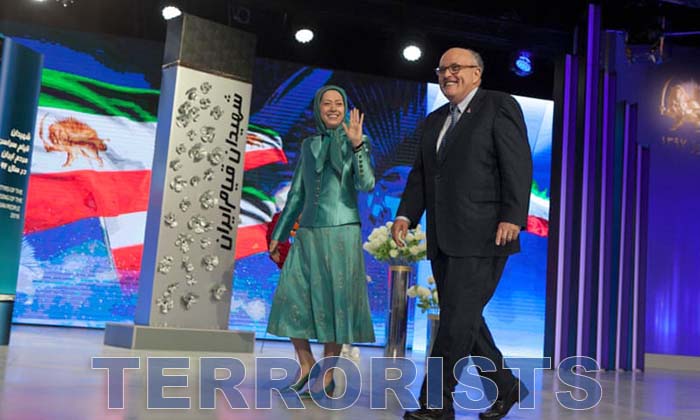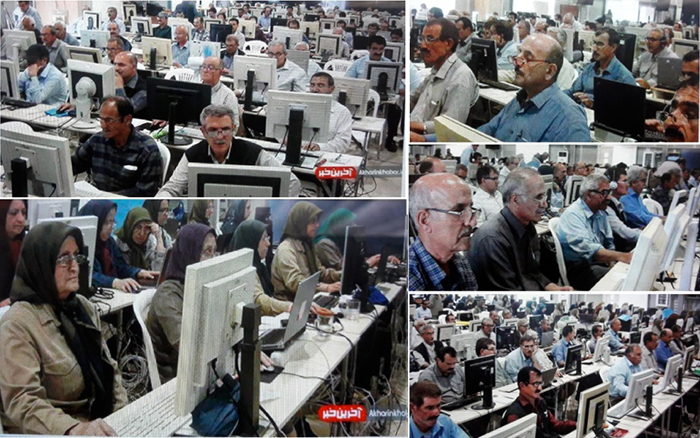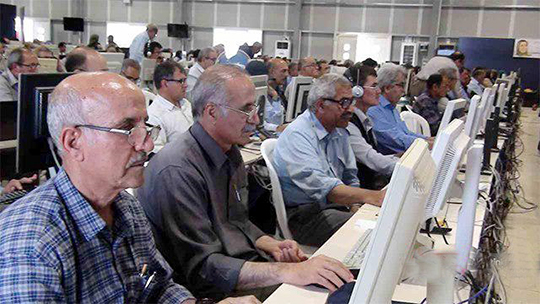In 2017, John Bolton promised the Mojahedin-e Khalq (MEK)—wrongly, it turned out—that they would be celebrating in Tehran before the Iranian Revolution’s 40th anniversary in February 2019. This July, at the MEK’s five-day conference in Albania, keynote speaker Rudy Giuliani still insisted the MEK is a “government in exile” and claimed the MEK is “a group that should make us comfortable having regime change”.

For context, promoting a group which is universally despised by Iranians inside and outside the country as traitors already stretches credulity. There is no evidence that Iranians are calling for severe sanctions against themselves. Nor are they calling for regime change. The MEK’s only audience in this respect are a warmongering cabal of Americans, Saudis, Israelis, and British, who like to hear what they want to hear. The rest of the world just isn’t that comfortable with this bizarre, terrorist cult.

Lately, even Europe has distanced itself from lending succour to the group. The MEK no longer has free access to the European Parliament where its activists would harass the MEPs and their staff. This year the MEK was barred from holding its annual Villepinte rally in France and was also banned from rallying by Germany. As a result of this, MEK leader Maryam Rajavi has decamped from Paris to Albania and the MEK announced that Albania is the group’s new headquarters.
The move from Iraq to Albania ought to have allowed unprecedented access to Western journalists keen to investigate the honey pot around which the anti-Iran cabal buzz with excitement. They were soon disappointed, as the MEK built a de facto extra-territorial enclave in Manëz and posted armed guards to keep out unwanted attention. But although the group were physically hidden from view, they were very exposed through their cyber activities.

Although it had been known for some time that the MEK operates a click farm from Albania, it was Murteza Hussain in The Intercept who revealed how the MEK uses fake social media accounts to curate a false narrative about Iran to influence US policy. The Heshmat Alavi scandal focused media attention on what is really happening inside the MEK behind the slickly marketed brand image that Giuliani so admires. This endeavour to scrutinise the MEK has been aided by a series of photographs which were leaked from inside the MEK’s camp in Albania and published in Iran. The photos are very revealing, but in ways that the MEK probably didn’t intend or realise when they were taken. Since the MEK so zealously hides its inner world from public scrutiny, these photos offer us an unguarded glimpse into the operational and organisational life of the cult.

The fact that the photos were taken at all is significant. At first glance they could be showing a session for seniors at the local library or community centre. But we see the women are wearing military uniforms and the men are all wearing similar shirts. Some are wearing ties. This is something the MEK don’t ever do unless in a public facing role. This indicates the images have been deliberately staged for a particular external audience. Certainly they were not meant for internal consumption, but neither is this for the wider public or else they would be on the MEK’s own websites. Based on information about the MEK already in the public domain, we can assume these photos were commissioned by Maryam Rajavi as a marketing ploy to ‘sell’ the MEK brand to financiers and backers.

There is clearly a deliberate effort to show that the MEK are “professional” workers in this computer room. Everyone is posed looking intently at a screen. Nobody is “off duty” in the pictures; yawning, stretching, drinking coffee, the normal activities of any workers. There is no evidence of relaxed, friendly chat between co-workers, everyone looks very serious. There are no cups of coffee or snacks on the desks. No pictures of family, husbands, wives, children, pets even. No plants or flowers. In spite of the rows of desks being squashed together closely, everyone looks very isolated.
There might be nothing wrong with that. After all, employers want to see their workers busy. But organisational photographs are also about marketing a brand, which includes marketing the core values of an entity. A group which claims, as the MEK does, that it is funded by public donations to struggle for democracy and human rights would surely want to create an image in the mind of the public about transparency, effectiveness, and positivity. By way of contrast, see how Human Rights Watch advertises its work culture. Even a quick Google image search on ‘call center worker’ reveals pictures of relaxed and smiling workers rather than people who look like battery hens. This is not the image any normal company or government office would use to promote their workplace.
In the MEK’s advertising photos the workers are gender segregated. Men sit in one room, women in another. The women all wear hijab. There is no pluralism here. The use of garden chairs and workers using glasses unsuited to screen work reveals that this management doesn’t care at all about the safety, comfort or wellbeing of the workers. They are using a mixture of outdated monitors and laptops. The cables are frayed and tangled.
There is no indication that the workers are happy at their workstations or enjoying their work. Why would they be with the picture of their leader bearing down on them, as in all dictatorships, lest they forget why they are there and who is in charge? (The picture of a solitary Maryam Rajavi is a clear acknowledgement that her husband Massoud Rajavi is dead.)
The MEK’s cultic system means that decisions are imposed from the top down. This means that those decisions are only as intelligent as the leadership. What Rajavi doesn’t understand is that these photos show beyond any words that the MEK doesn’t share our values. The leader is selling unthinking, unquestioning, obedient slaves, people who won’t act or speak unless ordered to do so. And that would only be ordered if it were productive for the MEK, regardless of the needs or desires of the worker.
What these images portray are conditions of modern slavery. These are elderly people who are unable to escape this cult and are coerced into performing work for which they receive no recompense. They exist on cruelly basic accommodation and sustenance, whereby even asking for new underwear puts the petitioner under question about their loyalty to the leader and the cause. They cannot leave because in Albania they have nowhere to go, no identity documents or work permits, no money, and they do not speak the local language. And also because the Trump administration wants the MEK to be there.
So, when Giuliani says we should be “comfortable” with this group, right-minded people the world over can honestly and unequivocally answer, “No, we are not comfortable ignoring this harsh reality just because the MEK amplifies an anti-Iran message to the world, and no, we don’t believe the MEK have any kind of future in Iran”.
by Massoud and Anne Khodabandeh

